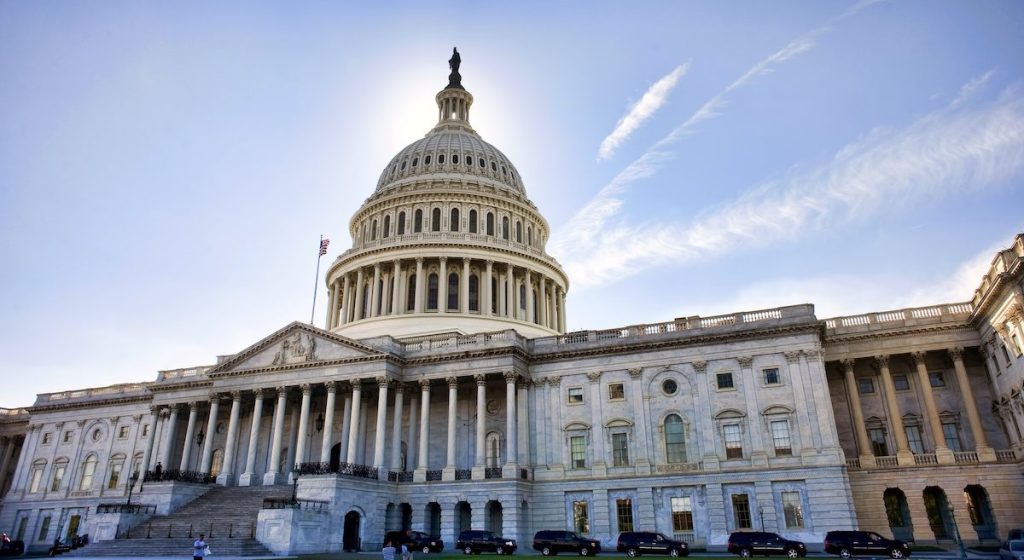Recently, Politico ran a story titled, “Democrats Clash Over Aid To First Time Homebuyers,” which laid out the debate over three competing bills with support from various Democrats in both the House and the Senate. The real question is, given the reality that the Build Back Better and budget bills in play are likely to end up far smaller than the original ask from President Biden, where will these housing bills end up, and will any of them make it off the cutting room floor into final legislation?
To be sure, what began as a $3.5 trillion proposal will most certainly be whittled down, perhaps to less than half of what was asked for. And with the housing market booming relative to other budget and infrastructure needs, will congressional leadership understand the efforts here to improve opportunities for first-time homebuyers (FTHB) and particularly mostly minority, first-generation homebuyers?
Rep. Maxine Waters and Sen. Ralph Warnock, with support from Senate Banking Committee Chairman Sherron Brown, have a bill that would provide up to $25,000 down payment assistance for first-time homebuyers who are first in their family’s history (parents and grandparents) to have owned a home. This has drawn support from a coalition of civil rights and consumer advocates as it directly funds the down payment for a home purchase to those who have mostly been left on the sidelines of ownership opportunity for decades.
Sen. Wyden, the chair of the powerful Senate Finance Committee, has proposed a $15,000 first-time homebuyer tax credit similar to but larger than the FTHB tax credit program implemented during the Obama administration. This proposal is more consistent with the Biden plan that was published as part of his campaign platform, but has drawn criticism from the civil rights community for two reasons.
First, tax credits help as you get it back when you pay taxes or at minimum after the transaction has settled. But you still need to have some sort of “loan” or gift for the down payment until that tax credit can be returned. The likelihood that the population who would be able to accomplish this is likely whiter and less in need than the Waters/Warnock legislation and could be perhaps more wasteful.
How lenders can prepare for increasing regulatory pressures
As compliance becomes an increased focal point for mortgage lenders and investors, staying ahead of state and federal regulations can be the difference between a flourishing business and one mired in fines. Learn about the changes across the compliance landscape, what lenders need to know and how to best navigate regulatory pressures.
Presented by: SitusAMC
Additionally, but similarly, a tax credit for all FTHBs likely sweeps in some who would already have other resources available for a down payment — either through a parent or relative, or from savings. Thus, taxpayers might be paying the down payment for some who simply don’t need the help.
A third bill from Sen. Mark Warner with similar focus on low-income, first-generation homebuyers would provide a 20-year mortgage to borrowers at a payment approximately the same as a 30-year mortgage. The focus here is in recognition that the ability to build equity quickly, early in the term of a homeowner’s experience, significantly lowers default risk and builds wealth rapidly. The expected outcome is a more durable borrower with better long-term prospects for sustainable homeownership.
While some of the same groups object to this bill, as it does not address the down payment road block that many prospective minority homebuyers face, advocates argue that this bill, combined with the Waters/Warnock DPA bill, could solve both the down payment and equity creation objectives together. Others argue that by combining the two, if used by the same homebuyer, only doubles the taxpayer outlay to each respective family.
The real question is whether any of these have a chance of making it, given the challenged legislative agenda, and if not, what the options are for first-time homebuyers going forward.
Clearly, down payment has been identified by many, including HUD, as one of the most critical barriers to first-time homebuyers. The good news is that, should this legislation not move forward at this juncture, there are scaleable solutions to provide DPA for FTHBs via a plethora of providers from state Housing Finance Agencies (HFAs), other housing agencies, and governmental entities that are available in every state in the nation.
The downside to these programs compared to the legislation proposals? DPA provided by most HFAs and governmental entities today uses secondary marketing gains to provide the down payment, mostly in the form of either a slightly higher rate and a repayable second, or forgivable second, depending on the structure and borrower profile.
These programs work today without any direct subsidy required from taxpayers and, while not as inexpensive as the DPA legislation proposals, can get families on the road to homeownership. And the results are clear. Per Stockton Williams, executive director of the National Council of State House Agencies (NCHSA), “HFAs provided DPA to more than 122,000 borrowers last year, at an average amount of $7,500 – a total of almost $1 billion in assistance.”
HFAs and other entities including governmental entities, and more, specialize in DPA solutions — this is what they do. They work with HUD-approved housing counselors and apply strong oversight to better ensure a long-term sustainable outcome. And they have results that are empowering minority borrowers with homeownership opportunities. Tai Christensen, the diversity, equity and inclusion officer at CBC Mortgage, states, “In 2020, the diversity rate at CBC Mortgage was 59% of the DPA we provided. Of that 59%, just over 60% identified as Hispanic.”
Clearly, Democratic legislators are united in the need to improve the outcomes of homeownership, especially for minorities. African Americans today have homeownership rates in the low 40% range, relatively unchanged versus those of decades ago. The focus here by legislators and regulators alike is an important step. After all, recognizing the problem is step one.
But should this legislation not make it to the final round, the good news is that there are DPA solutions in the market. Lenders and consumers need to be aware of these and leverage them in an effort to make sure all opportunities are provided, especially to those that are disenfranchised historically from the ability to become a homeowner.
While the equity building solution provided under Sen. Warner’s 20-year term mortgage legislation cannot be solved by the programs in place today, it could certainly be one to augment existing DPA programs, likely at a lower taxpayer cost in total. It’s not the perfect outcome to be sure, but it could be one way of thinking about federal budget options in an environment where there is so much competition for limited federal budget dollars looking forward.
David Stevens is the former CEO of the Mortgage Bankers Association as well as a former FHA Commissioner at HUD. He is currently CEO of Mountain Lake Consulting, Inc.
This column does not necessarily reflect the opinion of HousingWire’s editorial department and its owners.
To contact the author of this story:
Dave Stevens at dave@davidhstevens.com
To contact the editor responsible for this story:
Sarah Wheeler at swheeler@housingwire.com







